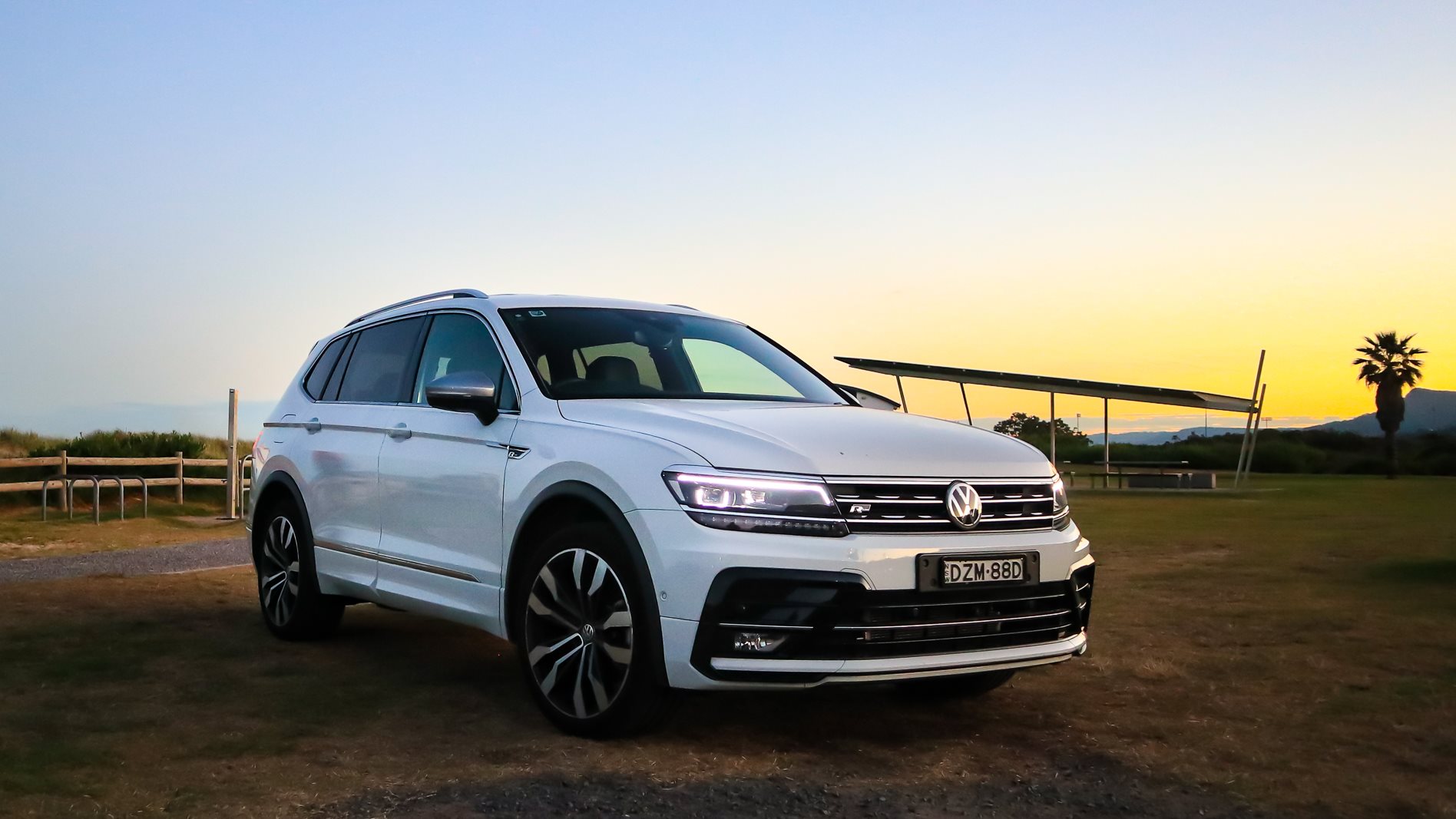
What is it: Volkswagen Tiguan Allspace 162TSI
Why we’re driving it: VW’s sort-of seven-seater offers something a little bit more than the stock Tiguan, and not just how many people you can fit on board.
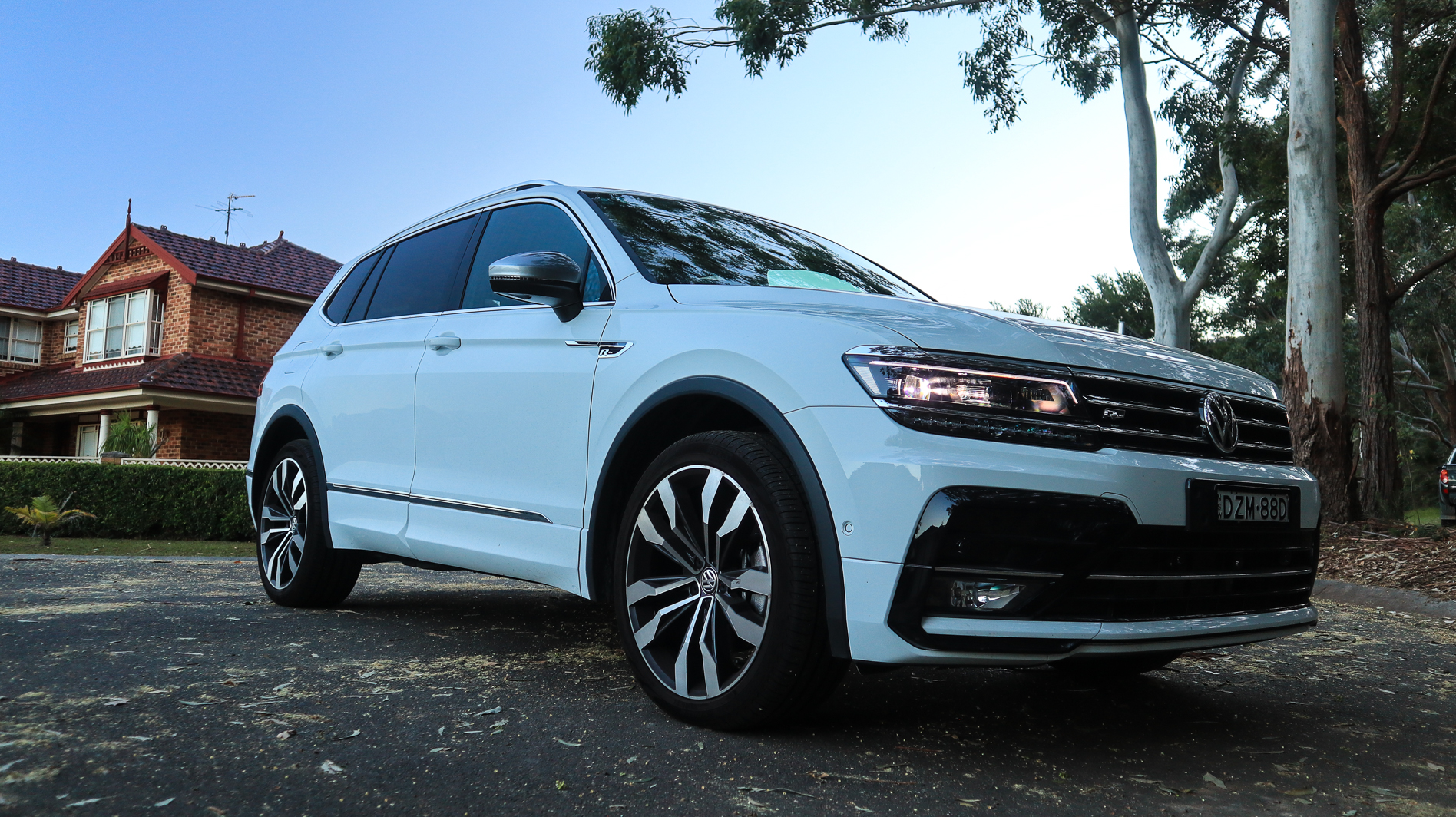
Update 9
Well, it’s time to say goodbye to WhichCar’s Volkswagen Tiguan Allspace, which has served us well for six months and 7000km.
On the whole, it’s been a pretty positive experience, too.
In short, the Tiguan has been trouble free for us. Other than adding petrol to the tank for the 2.0-litre turbo, we’ve really had zero issues to report. The interior trim has held up well despite dogs and bikes and kids hopping in and out and we’ve managed not to scratch those lovely 20-inch rims either.
It drives nicely, too; the seven-speed dual-clutch unit is a far cry from the troublesome units of years past, and for my driving style it works really well.
Mel wasn’t as happy with it, though – she had a bit of drama doing things like reverse hill starts because it would roll forward on the clutch before she could get the drive to hook up, which spooked her a bit.
Solution? Left-foot braking can help (though you can’t overlap brake and accelerator too much or the throttle dies), and there’s also an auto hill hold button that keeps the car in place too.
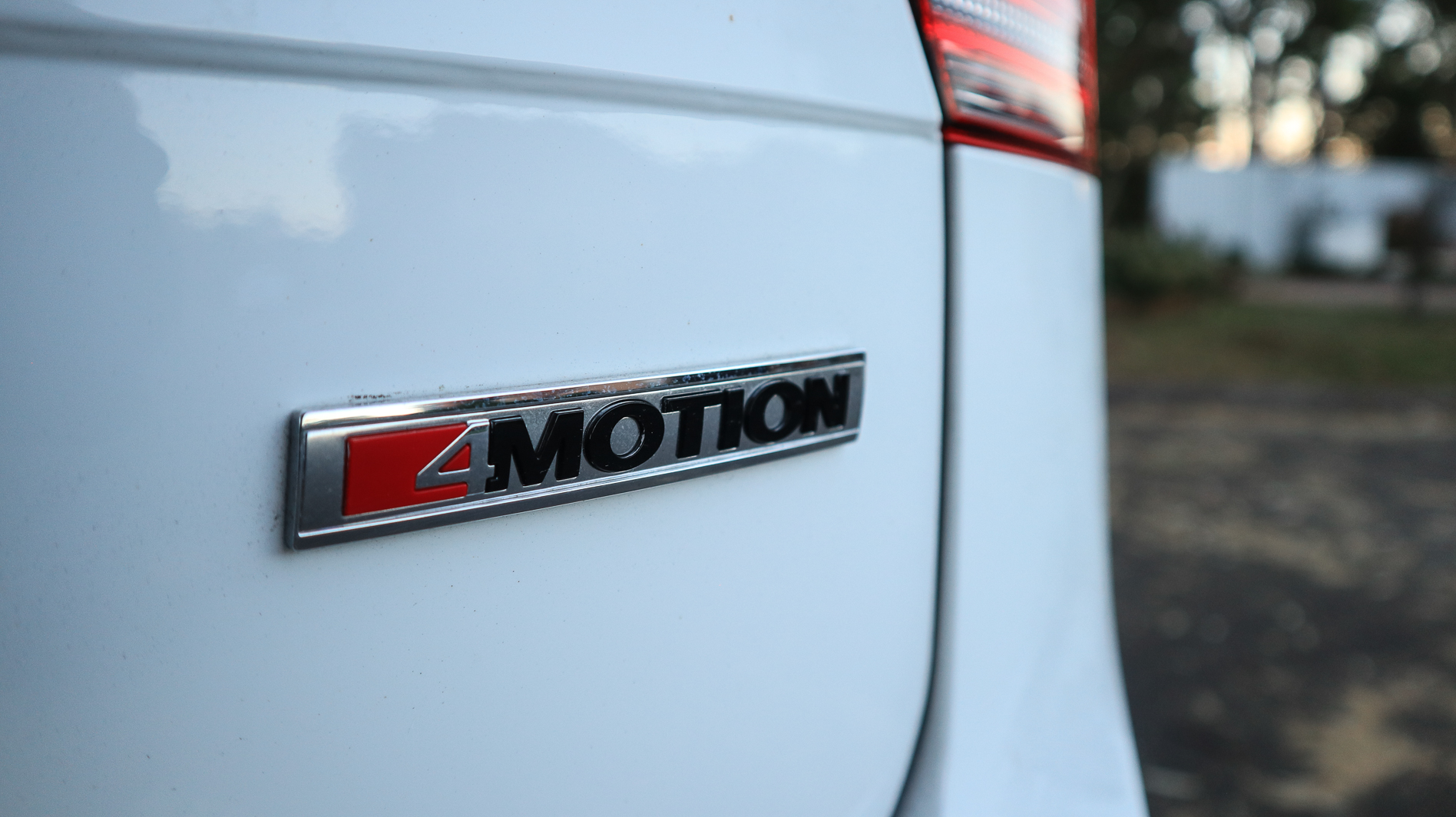
And we both loved the auto park feature. Well… I did.
Fuel use over the six months and 7000km worked out at 9.4 litres per 100km, against VW’s claim of 8.3 on the combined cycle. It does need 98 octane, though, which makes it a little dearer to fill – it averaged out at about $85 per tank.
Handling is terrific, with a great balance between competent poise and genuine comfort. It’s precise, it’s predictable and it’s easy on long trips, especially when you combine it with the excellent adaptive cruise control.
What I really like about the Tiguan, though, is the silence. It’s only after you hop out of another car that you notice just how serene and calm and quiet the interior of the Allspace really is. There’s no discernable tyre noise, the wind noise is low and the engine is unobtrusive.
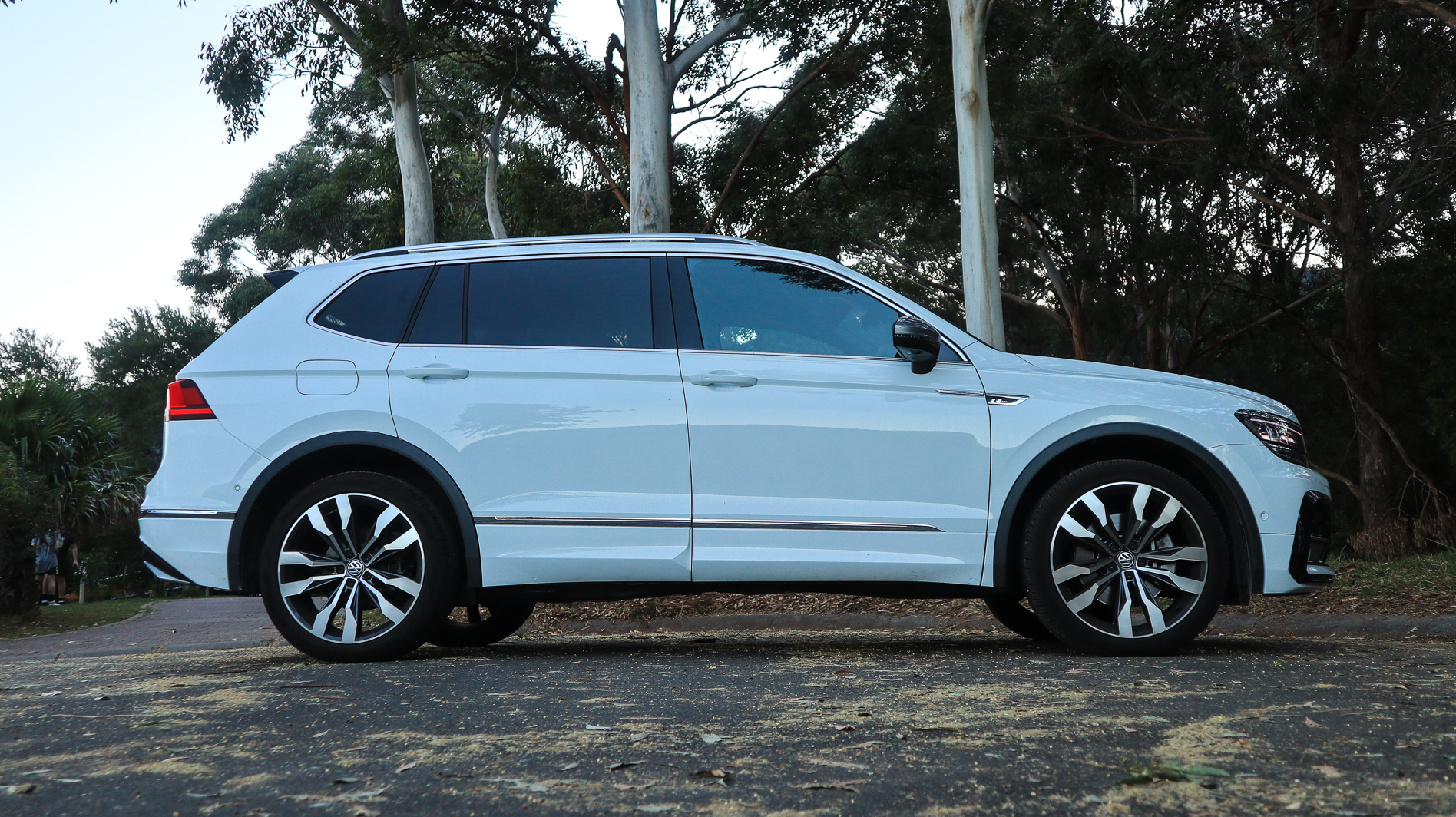
Overall, Volkswagen’s Tiguan Allspace has been a great addition to the WhichCar roster, and to our family’s daily life. It’s comfortable, quiet and pretty good on fuel, and there’s enough room for a larger family.
If you’re okay with the cost of entry, then it could be the right car for your family, too.
Update 8
I’ve ridden bicycles since I was five and as a consequence, I’ve shoved them in all manner of vehicular transport over the years. A key parameter, then, for me owning a car is its ability to absorb at least one bike, and preferably in a manner that actually encourages me to put said bike in the car and go for a ride somewhere.
That means no removing of wheels and/or car bits to make it happen.
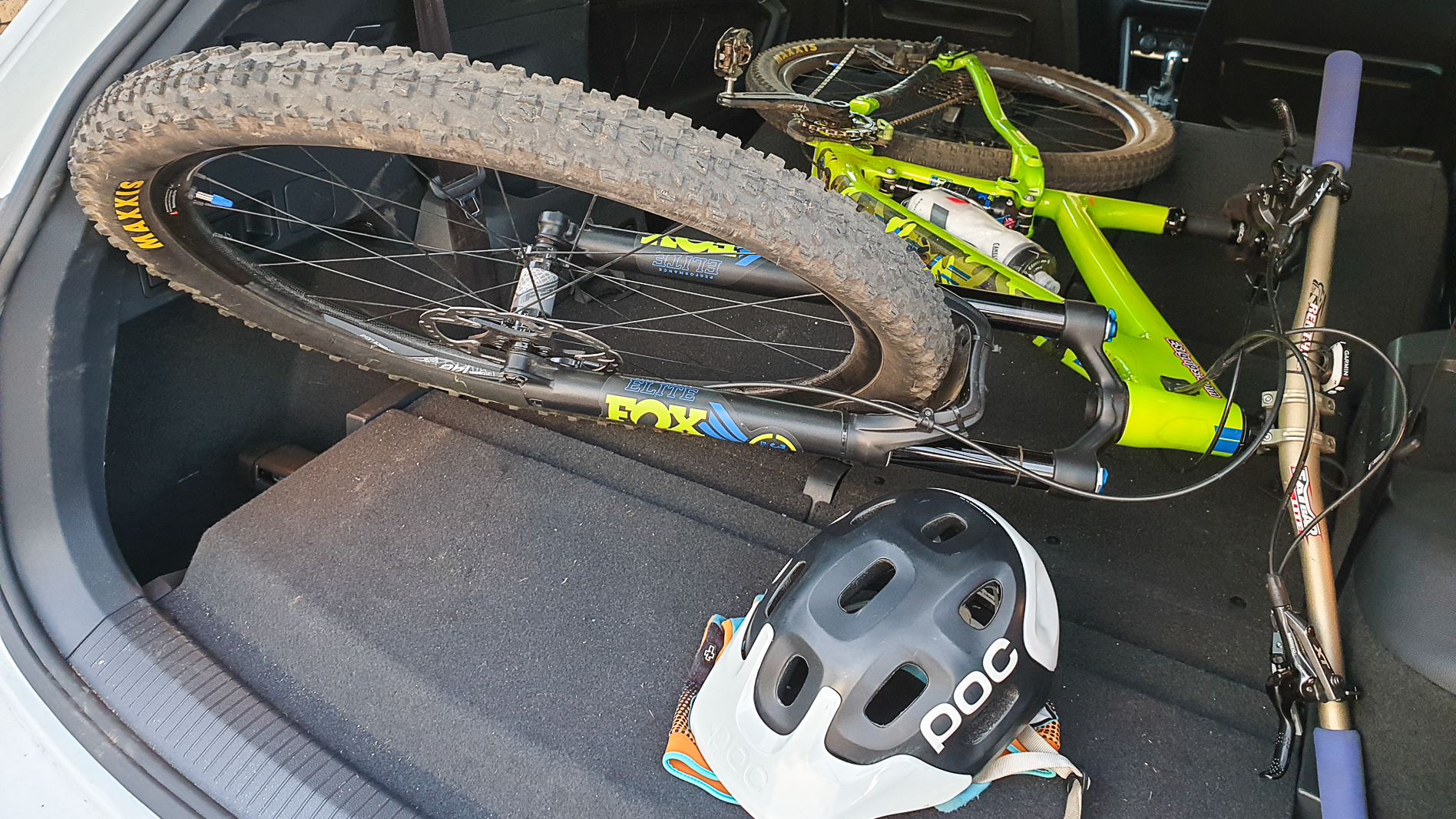
The Allspace has lugged a couple of bikes here and there during our tenure, but I thought I’d get the assistance of youngest daughter, Milly, to video me putting a bike aboard.
My rig is a large-sized mountain bike with 29-inch wheels; it’s not the biggest (or more accurately longest) bike I’ve owned, but it’s pretty representative of the mountain bike community. If it can swallow a large MTB, it’ll easily cope with the average road bike.
As you can see in the vid, we had to fiddle a bit to get the seats to drop easily, but once you know the trick of the sliding second row, the flexibility of the Tiguan really ramps up.

There are lots of nice little touches, too, like fold-out hooks (perfect for a helmet) and seat-belt holders for the third-row sash belts.
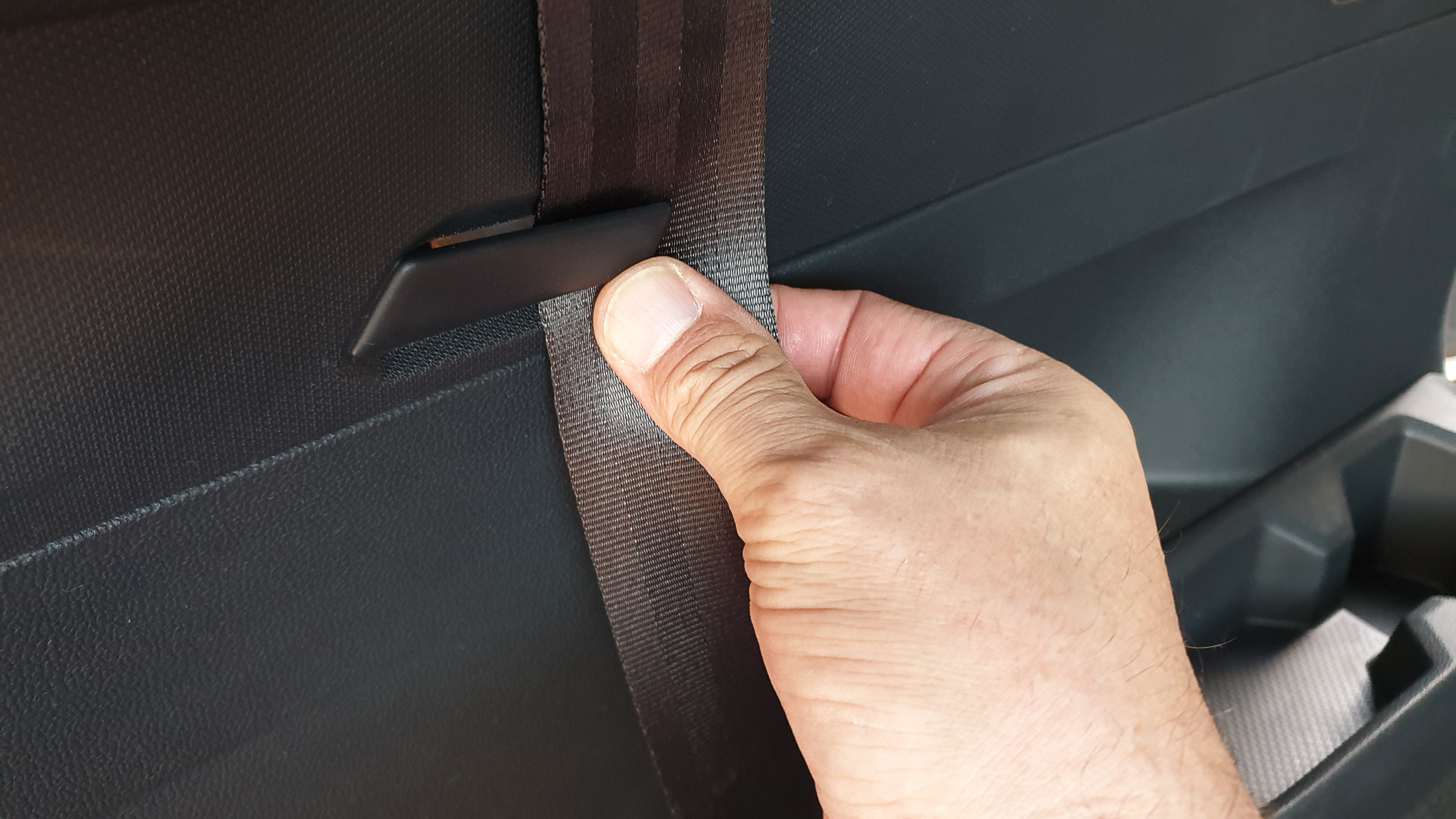
Of course, there, are alternate ways of carrying the bike, but as I’ve discussed in an earlier update, quickly bolting a bike rack to the Allspace’s towball is all but impossible. The hitch itself has been built with additional reinforcing plates that completely rule out using a large flat spanner or shifter on the nut that holds the towball on.
You could also add roof racks to the top, but it’s awkward to mount an adult bike – and especially a heavier mountain bike – onto the roof of an SUV.
A couple of things to note – you’ll only be able to carry two people if you want to carry your bike whole. though you could carry two bikes thusly. I’d recommend a removalist blanket (Bunnings sells them) or even an old yoga mat to keep them separated.
As well, lash the bike down with an elasticated strap or a tie-down to keep it from flying around the car in the worst case scenario.
Shoving bikes in and out of cars also plays hell with plastics, so an extra removalist blanket laid down before you add the bike won’t hurt.
But in all, success! Looks like I’ll be getting out on the treadly more often!
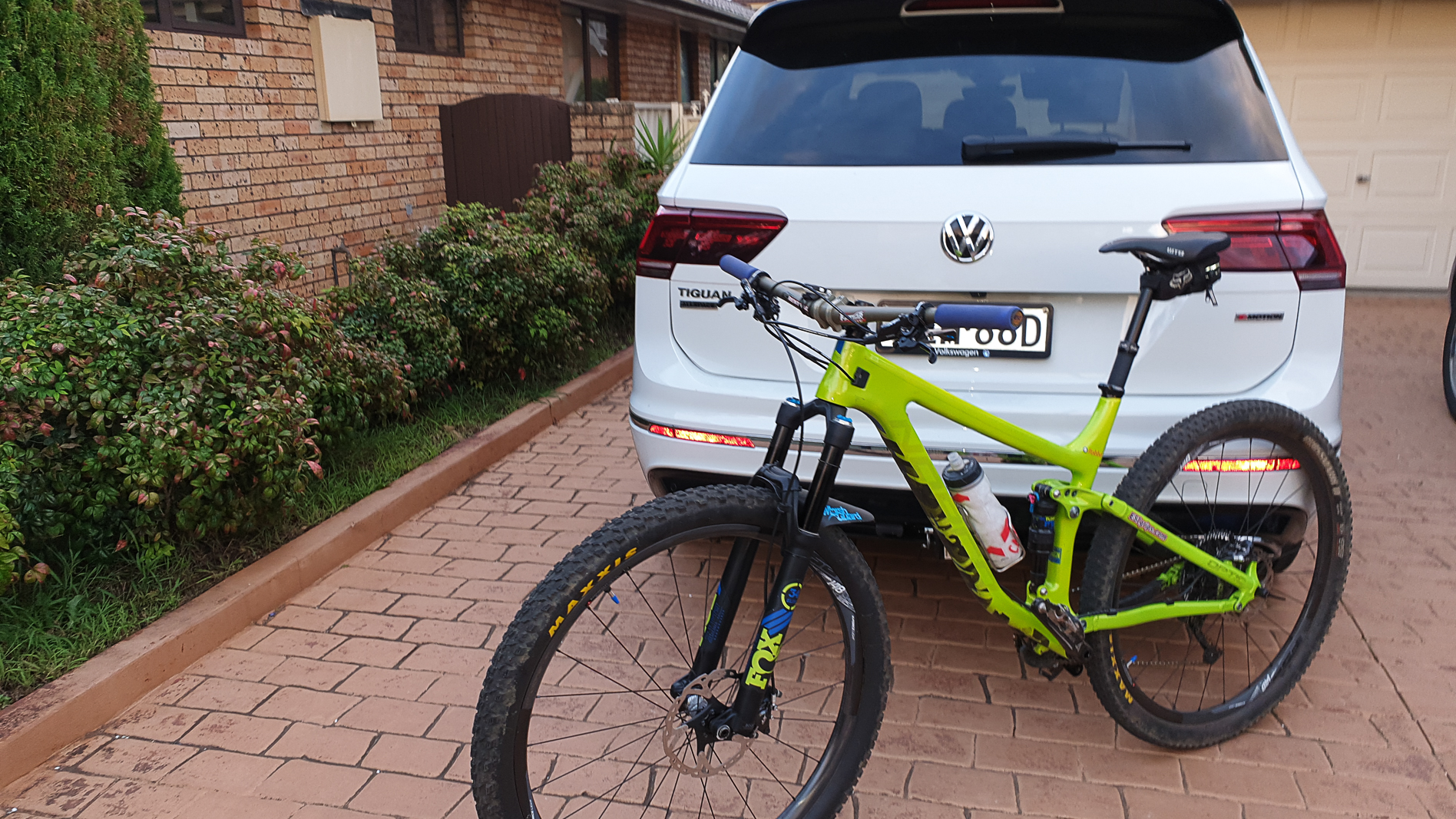
Update 7
My wife would say that when I drive, I’m a fidgeter. Me? I prefer to call it ‘optimisation’. Not for me is the auto setting on the air-con, for example, and if a trip extends past an hour, guaranteed I’ll adjust my seat or a mirror just so.
It’s the same with the drive mode select system aboard our long-term Allspace. I can feel Mrs Robbo’s eyes rolling when I reach down to the rotary dial to swap between the various settings, but hey… why put a button in a car if I can’t play with it?
The Tiguan Allspace’s drive-mode selector is actually pretty complex. Not only does it offer a brace of on-road modes that includes Comfort and Sport parameters, but it can also change the car’s behaviour at a more granular level to cover looser surfaces.
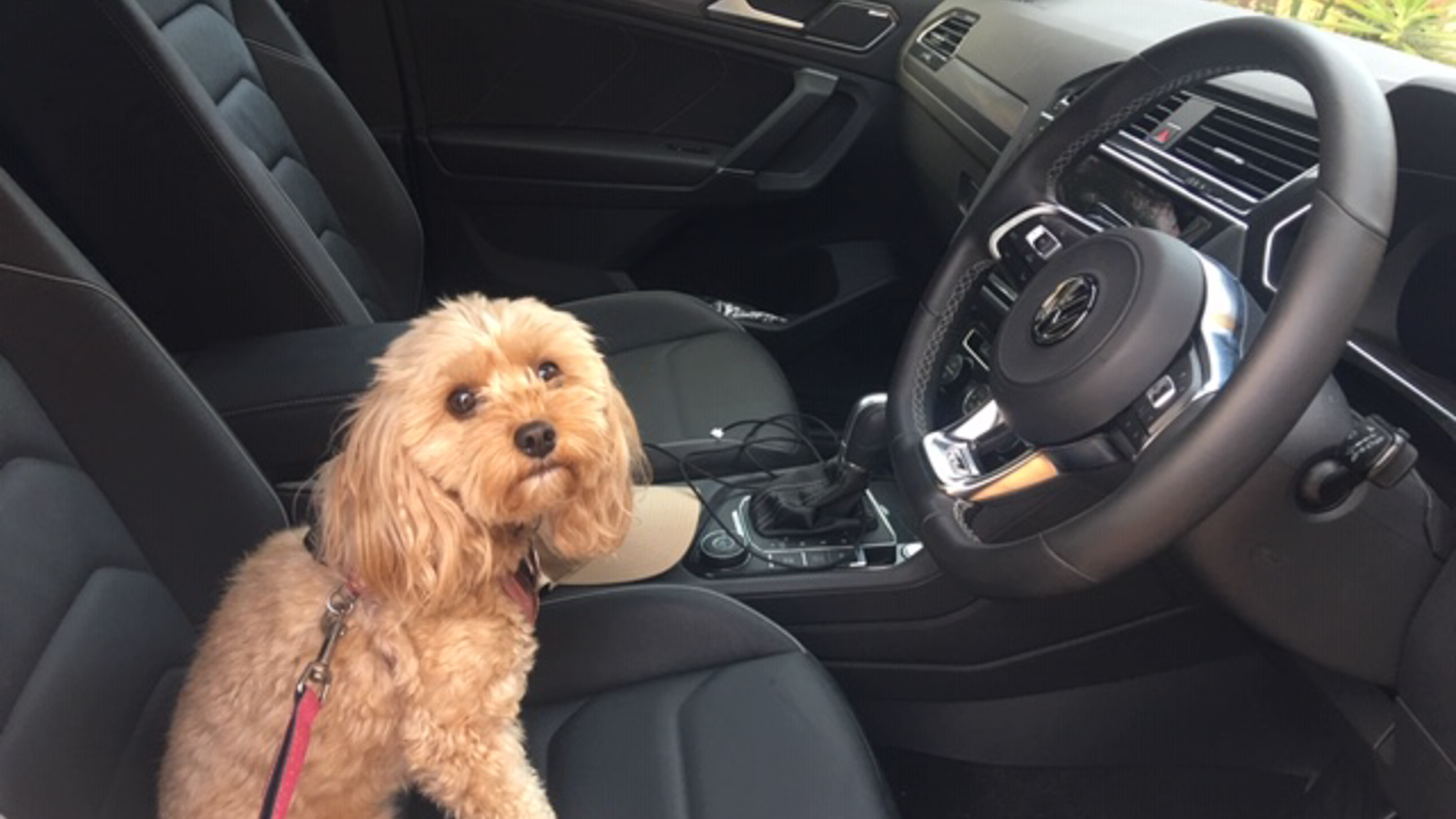
Which button is it again, dad?
Its official name is Adaptive Chassis Control, or ACC for short, and it ties a range of systems – including the four shocks, the gearbox, the engine and even the air-conditioning system – together via a central computer.
The five on-road modes (we’ll look at the off-road stuff next time) include Eco, Auto, Comfort, Sport and Individual, and the central computer converses with the various systems in millisecond-long increments to figure out what’s needed.
Sport mode, for example, adds extra weighting to the electric power steering, tells the gearbox to switch into Sport mode to hold gears for longer and firms up all four shocks, while Comfort does the opposite; it softens the suspension (specifically, it softens the compression damping of the shocks), lightens the steering effort and smooths out the gearshift points.
My favourite mode is – unsurprisingly – the one that I can fiddle with most; Individual. My preference is for softer suspension but a sportier response from the engine and gearbox, and I can set that up pretty easily.
What the mode button doesn’t do is change things like power output. You’ll always have 162kW and 350Nm, but the ACC system delivers it differently by changing the way the accelerator pedal delivers that power and torque. The gearbox, too, will change the points at which it swaps cogs for you. It’ll allow the Tiguan to rev a bit harder before it changes gear in Sport mode, for example, or change more seamlessly in Comfort mode.
This week, though, let’s talk about the one mode that I bet not a lot of people use very often – Eco.
Let’s assume for the sake of argument that most owners will, in reality, leave the mode button alone most of the time, meaning that the Tiggers will default to its Auto mode. And of course, that’s more than fine – it works well and gives the average owner a set-up that’s very Goldilocks.
During the course of a big-mile week, though, I decided to lock the car into Eco mode, just to see if it did what it says on the tin. Eco mode not only tells the gearbox to shift at the lowest rev point it can get away with (fewer revs equals less fuel burned), it adds a new behaviour into the loop.
VW calls it a coasting mode, and even though it’s been around for a while, it’s still pretty clever. At speeds over 60km/h, you can lift all the way off the throttle pedal, and the drive system will actually decouple (or disconnect) from the engine.
The revs fall away to below 1000rpm, the drag on your drivetrain disappears and the Tiguan serenely floats along until the moment you touch the accelerator, where it instantly engages again. Think of it as knocking the car into neutral while coasting down a hill, and you get the idea. It can be engaged at speeds up to 130km/h, as well, but the jump from low revs to highway speeds is more noticeable.

The Tiguan’s on-board computer does a good job of keeping score. Our real-world fuel figure was 9.4L/100km
I kept Allan the Allspace in Eco mode for an entire tankful of 98 RON fuel, which highlighted one annoyance; while the majority of the Eco mode settings stayed active after the car is shut off and restarted, the gearbox – and by dint the coasting mode – had to be prompted to go back into Eco.
As such, my 651km result from 61.6 litres of fuel – interesting in itself because the fuel tank capacity is only rated at 60 litres! – could probably be improved. The result also marries well with the Allspace’s combined fuel consumption claim of 8.3L/100km, with a real-world score of 9.4L/100km.
I’m in the midst of giving it another go, so I’ll keep you informed of my next highest score.- Tim Robson
Click HERE to get your free weekly WhichCar eNewsletter
Update 6 – video
Here’s a video update of our time with the Tiguan, where we have a closer look at the two rear seats. We also check out the load space, the tow bar and the Tiguan’s driver mode button.
More next week – let us know if there is anything you’d like to see! – Tim Robson
Update 5
When Robbo asks “Do you want to borrow Allan for the weekend?”, it caused a moment of hesitation before nodding in the affirmative… before I realise that’s his moniker for the WhichCar Tiguan Allspace 162TSI long-termer! Yeah, I dunno what he was thinking, either…
Being Deputy Editor of 4×4 Australia and risking the chance of being spotted driving a ‘soft-roader’ may have sounded like professional suicide, but I was looking forward to checking out VW’s slightly-stretched Tiguan for a few reasons.
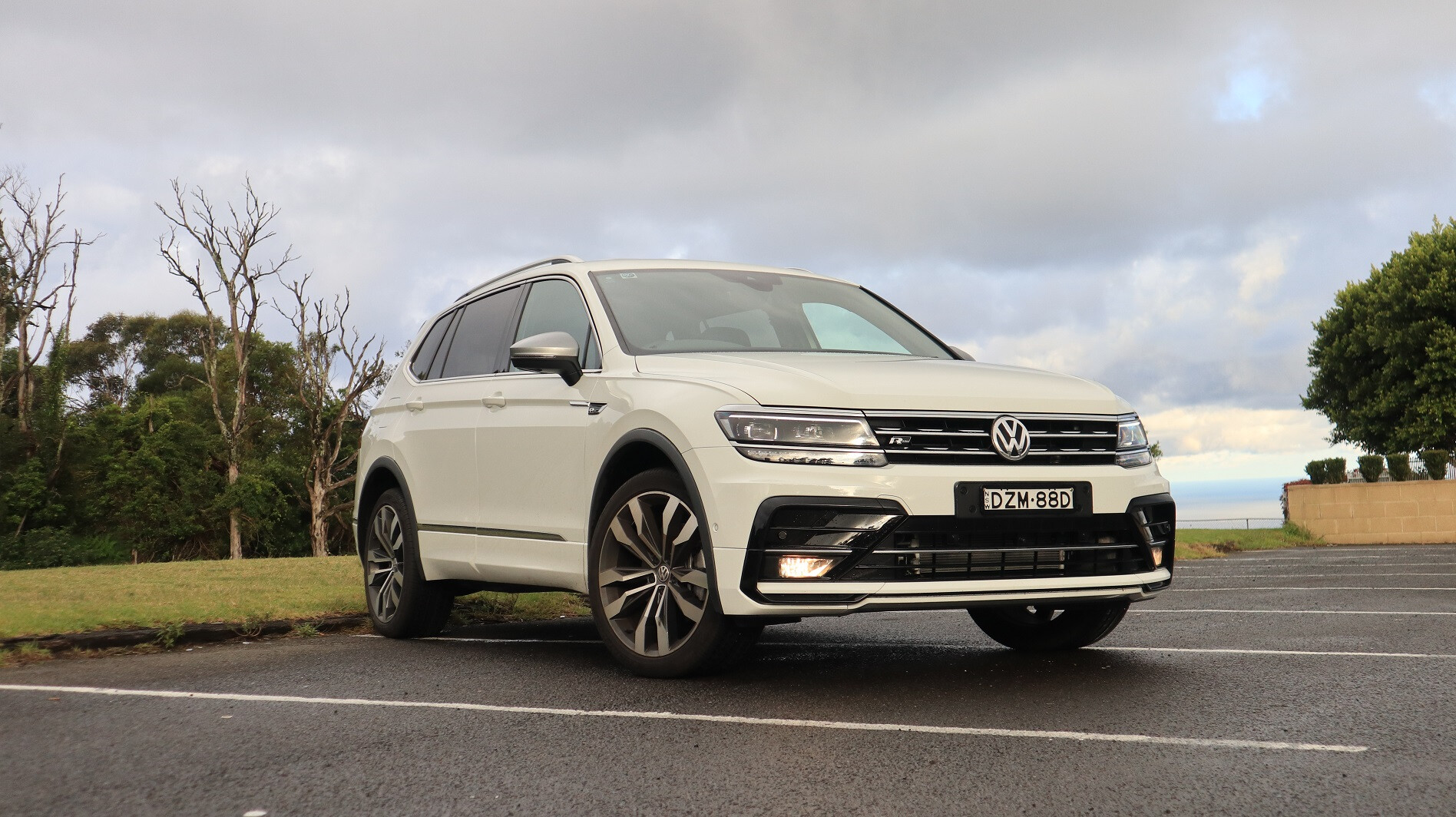
Our brood (two kids, seven and five) is growing, and our current primary vehicle (a Subaru Forester XT; I also suffer the pain of Land Rover Discovery 2 ownership) is feeling the squeeze, so the promise of some additional space in the rear (and the third row seating for my daughter’s soccer team-mates) was welcome, as was the fact I always seem to find a comfortable driving position in a VW.
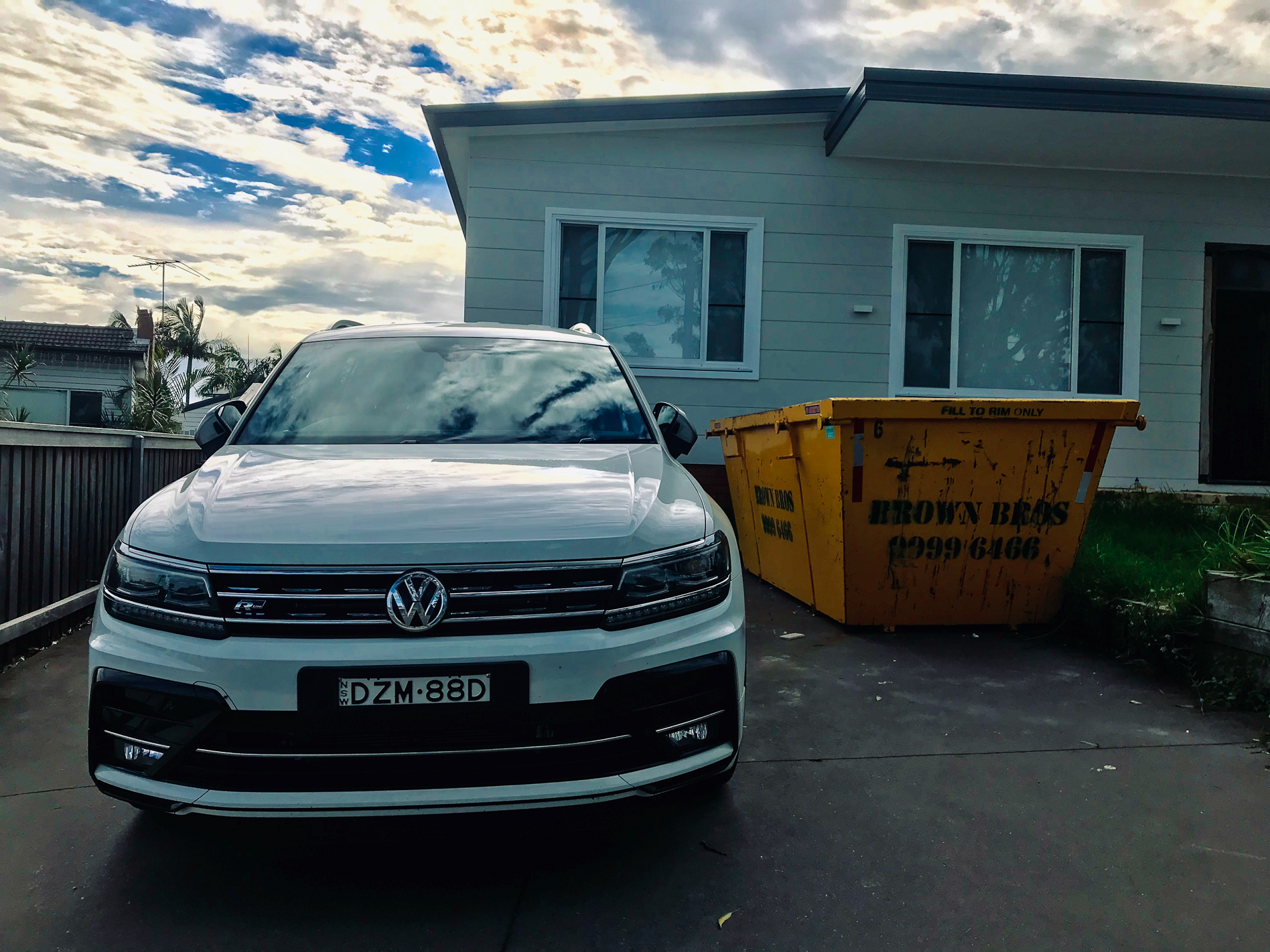
Renovation pain, Tiguan pleasure
Granted, most of that driving time has been behind the wheel of various Amarok dual-cab utes, a few Golfs and one Passat, but VW has nailed the driving position again for this 182cm long-armed boofhead; clear outward vision, a nice chunky steering wheel, and all essential instrumentation close at hand. In short, it just works – for me anyway.

No sooner was Allan parked in the driveway than the young Walkers were in to check it all over, with the third-row seating a popular form of entertainment thanks to the ease with which it can be put up, and then put down again, for a flat cargo area.
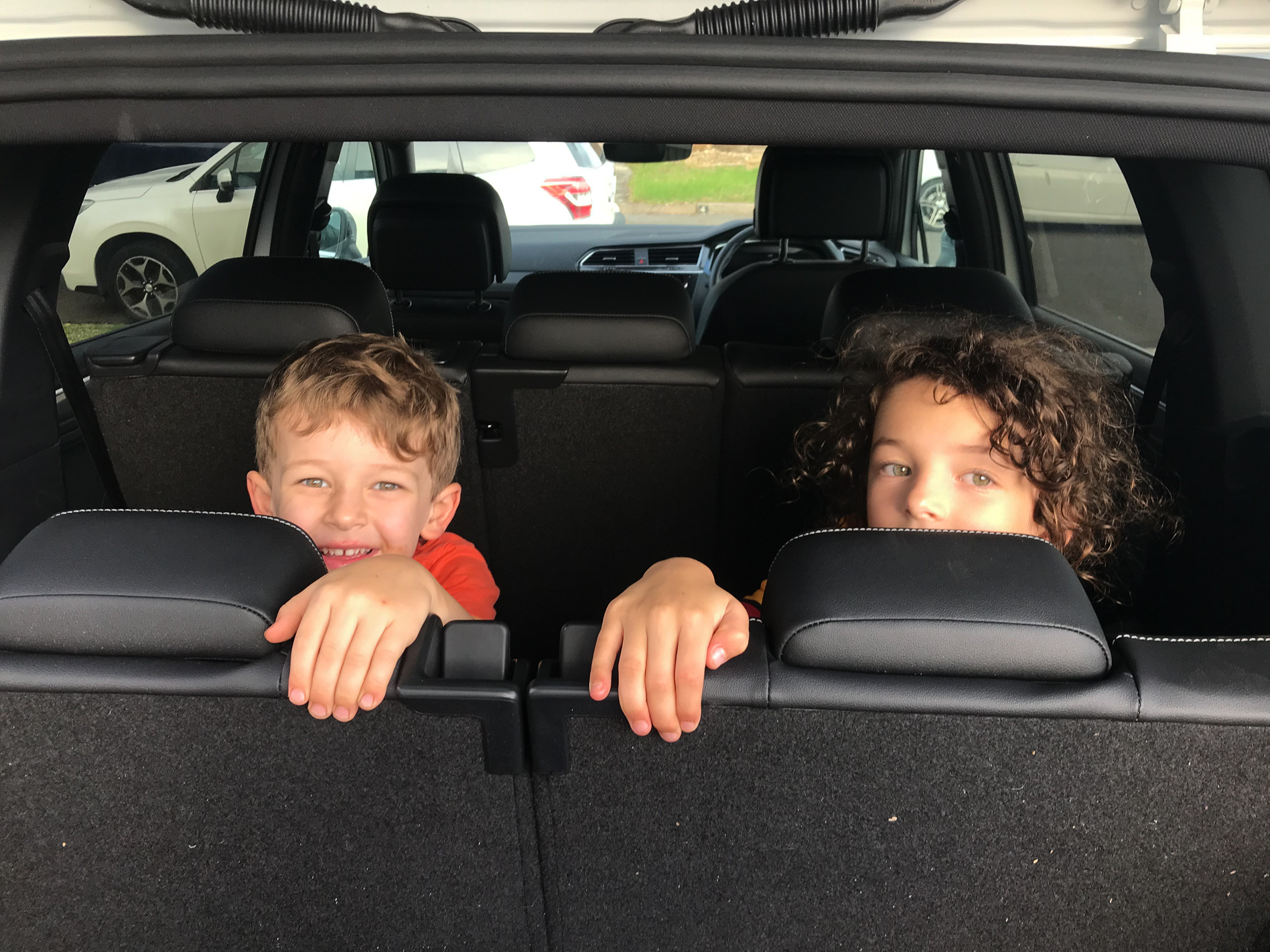
Liam (left) and Sarah settle into the third row
Getting in and out of the third-row was a doddle, too, for two young’uns under 150cm in height, but I reckon you’d have trouble fitting any human over 12 years of age in there, unless it was for very short trips (or as a punishment!?).

Butt-warmers for the second row are a great addition, as well as temperature controls. And no, that’s not my charger cable!
Still, it’s handy to have that versatility for the occasional tag-along passenger, and when the third row is down, that extra storage space in what is still a relatively compact vehicle is very welcome. – Justin Walker
Update 4
The better-looking half of the Robbo clan has stolen Allan the Allspace on a couple of occasions, too, and – given that she’s 160cm to my 185cm, her input on driving positions is pretty important.
Allan actually offers three memory settings for the driver seat, which also recalls things like the inflation volume of the bolster cushion, as well as mirror positioning, so that takes the sting out of following her back into the driver’s seat. Or trying to, at least.
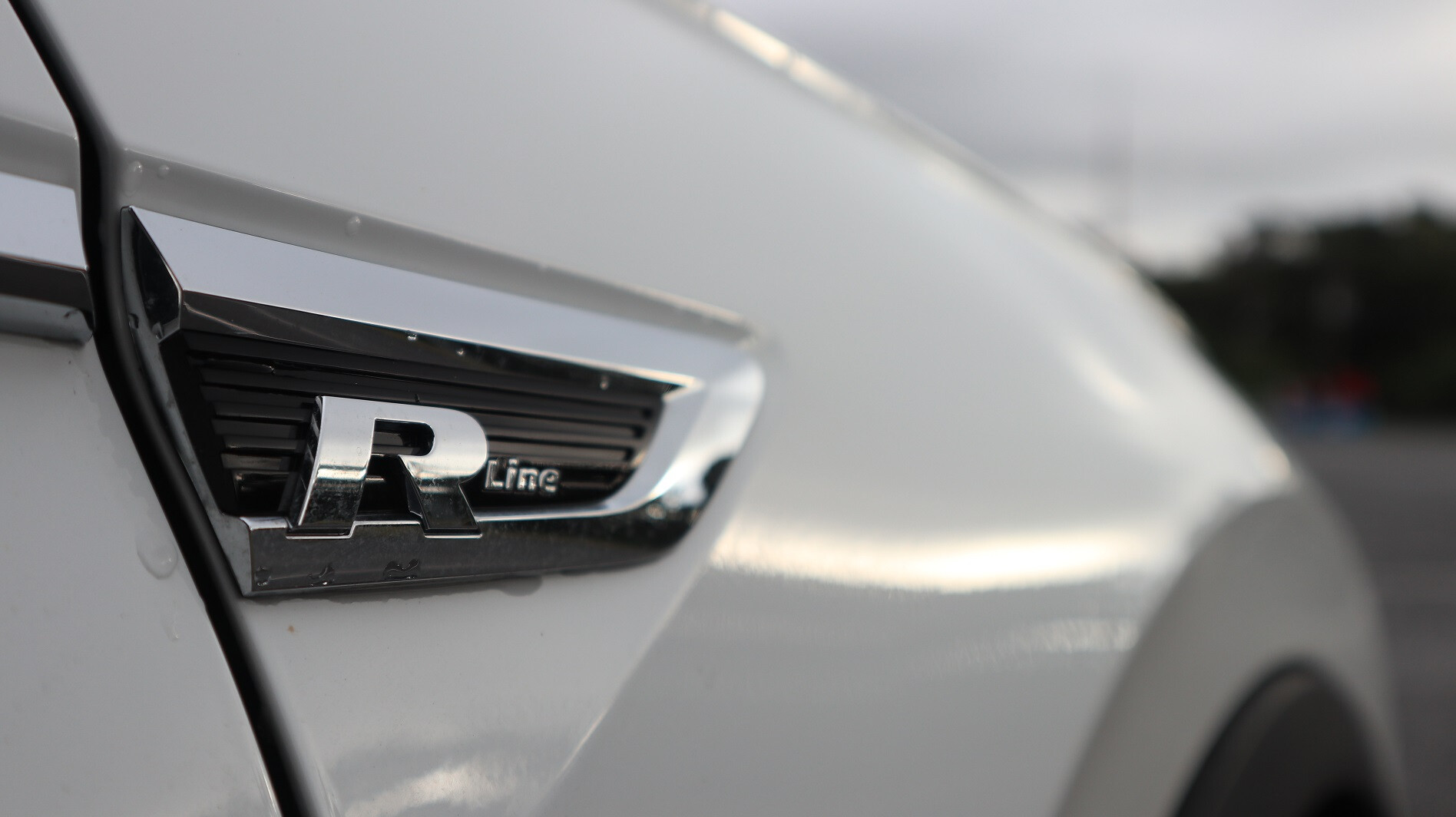
Unfortunately, it wasn’t all roses and sunshine for Mel. “I found it a bit hard to get a good fit behind the wheel,” she confesses. “When the wheel is in the right place, the pedals are too close, and I find I have to really arch my foot back to get to the brake pedal.”
Mel also struggled a bit with the fact with the Tiguan hides most of its on-board functionality within its multimedia screen. I’ll put this down to unfamiliarity with the car; I actually find it pretty easy to use, besides the fact that some of the controls run down the left of the screen, in obvious deference to the left-hook origins of the factory.
Apple CarPlay works well through the touchscreen, too, but the screen itself can get pretty gross. We keep a microfibre cloth in the glovebox to keep things smear-free.
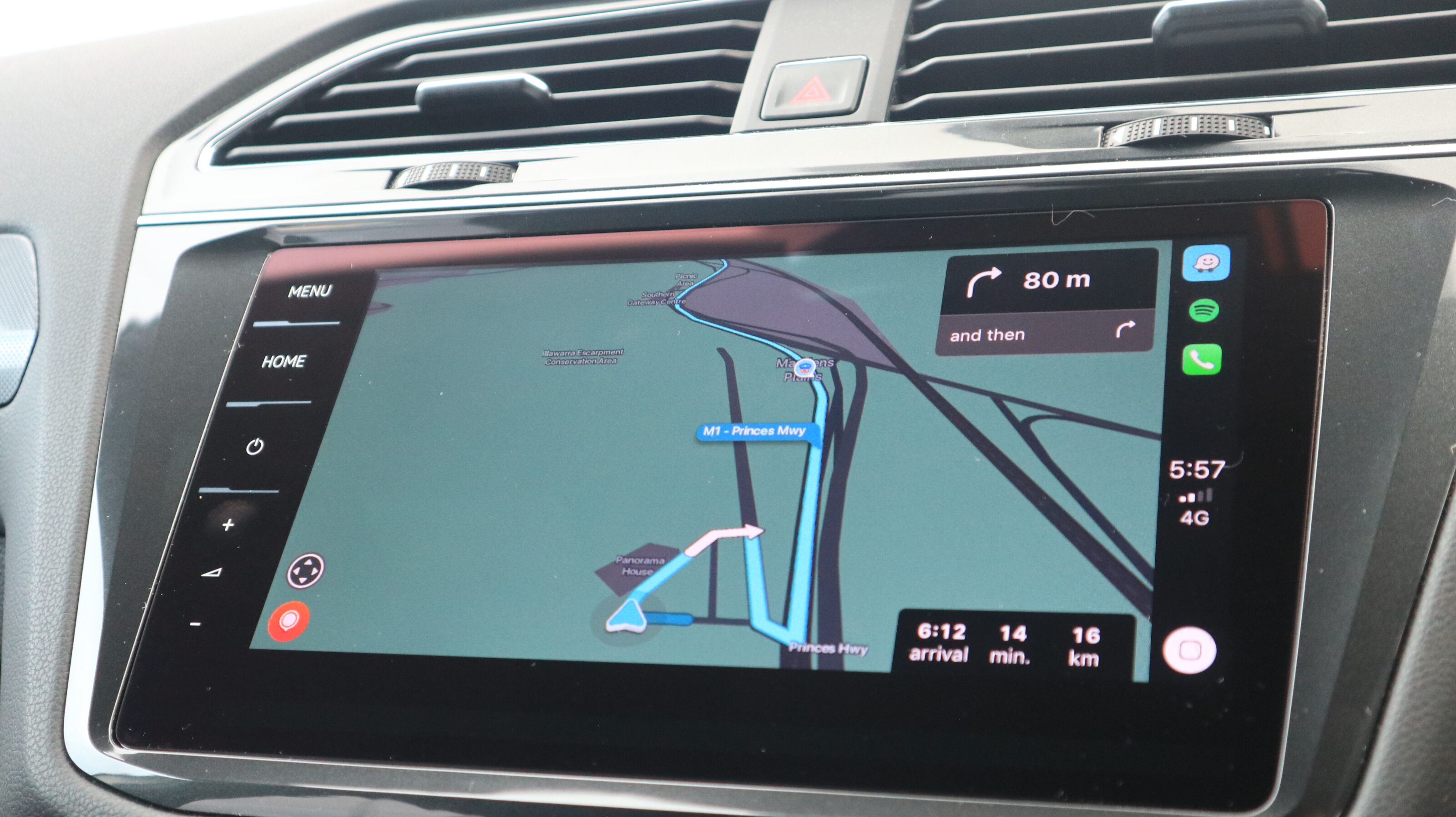
Clean screens in Allan the Allspace
Update 3
Volkswagen’s EA888 is to the world of engines like the micro-USB cable is to the charging world; it’s ubiquitous, entirely practical, quite flexible and even though it’s an older technology, it’s more relevant than many others that have followed it since.
Allan, as we’ve christened our Tiguan Allspace, uses the EA888, as does the Golf GTI, the Polo GTI, the Passat, the Arteon, the Skoda Octavia RS… Volksy has certainly gotten its money’s worth.
Why is it such a popular power unit? Well, making hundreds of thousands of one particular thing is relatively easy, and that simplicity (hopefully) guarantees reliability.
Via the magic of engine control units (ECUs), engineers can also control how much power the engine can deliver, and how it delivers it, depending upon the application.
Even though the two engines share the same 162kW power output, the Golf GTI, for example, will have a different, more aggressive fuel and throttle position map, while our Tiguan is designed to deliver its power in a more languid, progressive way.
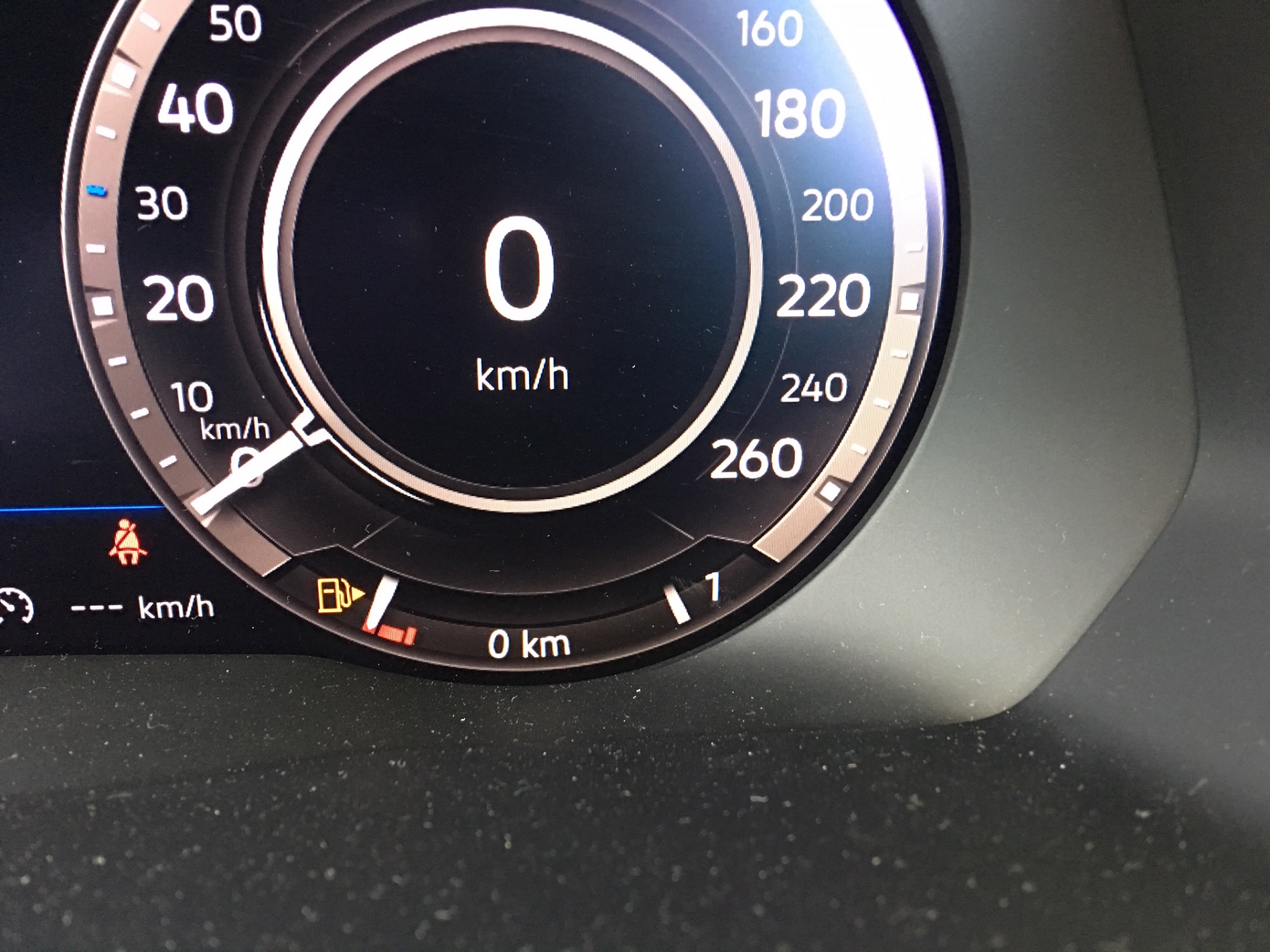
Living on the edge
Changing engine maps can also help improve fuel economy figures. Allan averaged 11.3L/100km over the first 525km full tank run, against a claim of 8.1L/100km. With a 60-litre tank, it’ll cost between $80 and $100 to fill, depending on where you live… but it needs the dearer 95 RON fuel to work at its best.
Of course, VW has gotten itself into hot water over fiddling with fuel mapping on its diesels before, as have many players in the automotive industry… but petrol engines haven’t been caught up in the mess.
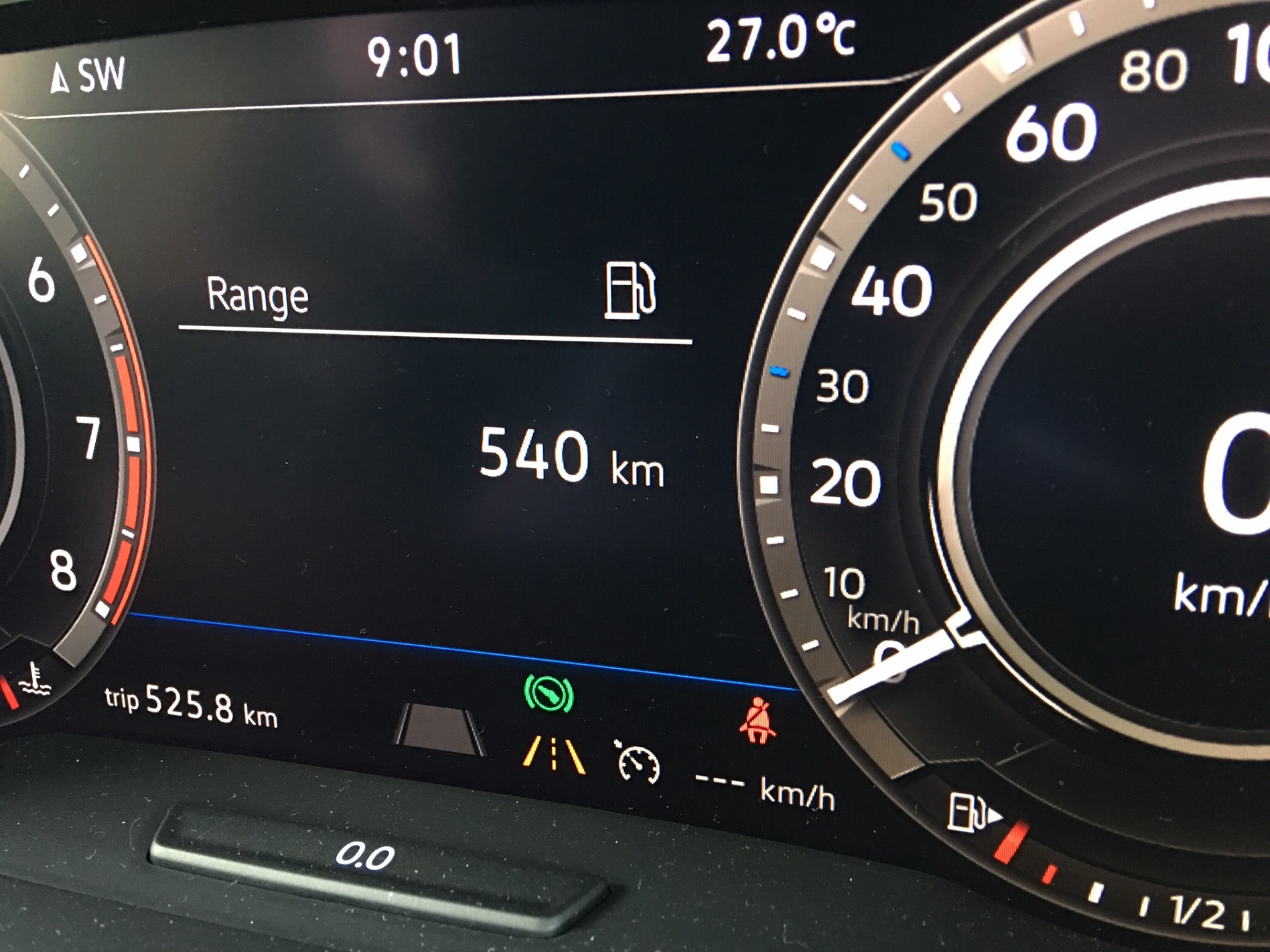
You should easily get over 520km per tank in the Allspace
UPDATE 2
When is a Tiguan not a Tiguan? When it’s a Tiguan Allspace, of course! Let me explain… the regular five-seat Tiguan is a regular mid-sized SUV, based on the same platform as the Golf and other VW products.
The Tiguan Allspace is also built on the same MQB platform, but it’s around 20cm longer and has two more seats than the Tiguan. Not only that, it actually has a subtly different design ethos as well.
A more robust, squared-off bonnet, narrower rear windows and that extra wheelbase length plays nicely with less fussy trim treatment to give the Allspace a more overtly macho character. Add this all up, and the Tigaun Allspace is a pretty different proposition to its five-seat brother.
Key difference, of course, is the number of seats. The second row still offers room for three, and you can add two ISOFIX baby seats to the outside seats for the young ’uns. In the rear cargo area, though, is where the magic happens.
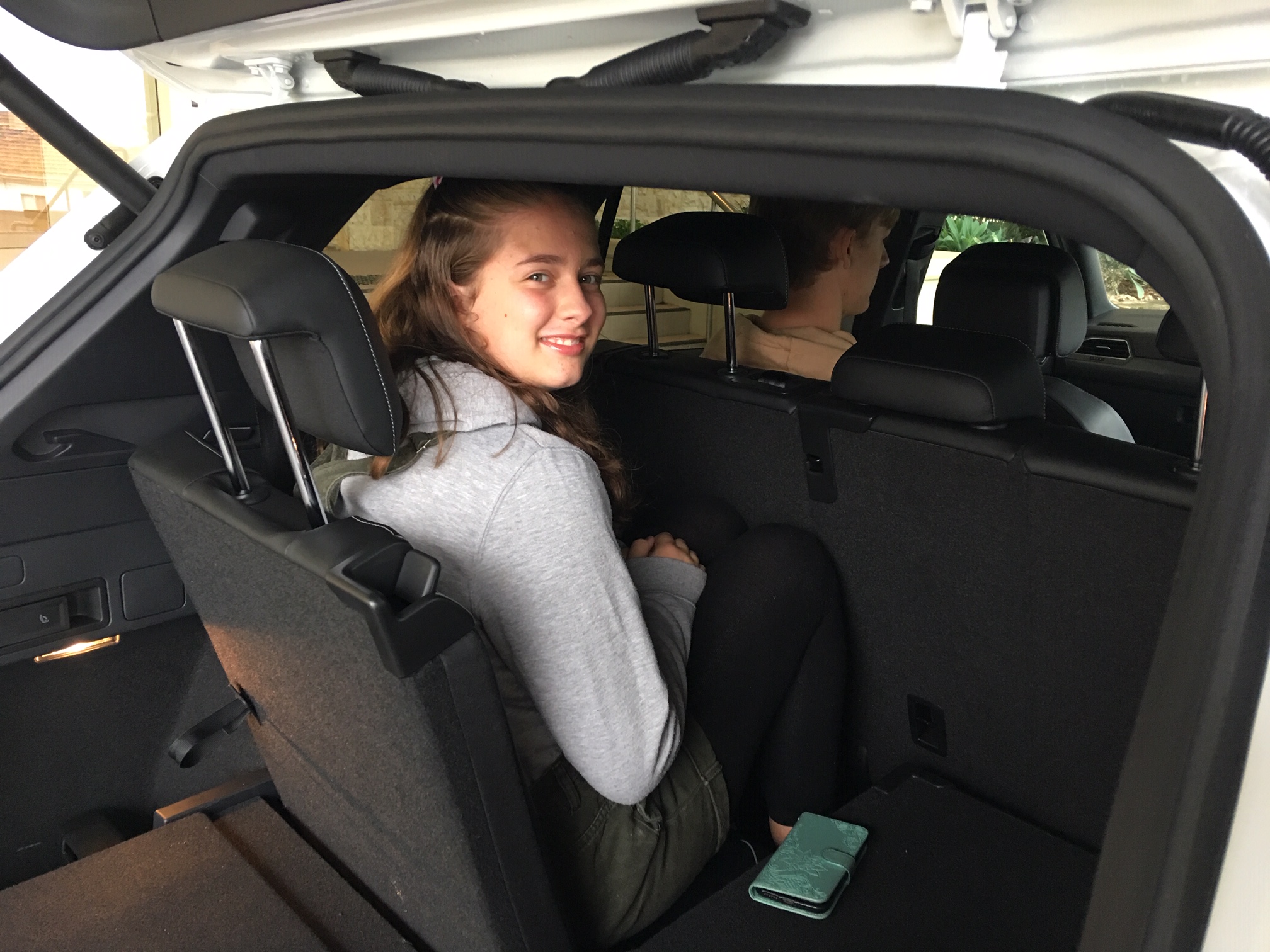
A pair of reasonably sizable jump seats is designed into the boot floor, folding away completely flat when not required. A tug on a loop of fabric swings them into place and also acts to lower them back down, while the second row is mounted on fore/aft rails, to enable some wiggle room.
It’s not, to be fair, a lot of wiggle room, as evidenced by pics of our (very tall, it has to be said) Miss 12, who volunteered for a ride in the third row. By squidging the second row forward a bit, we made a little more room, but Milly needed to sit cross-legged to get even partway comfortable.
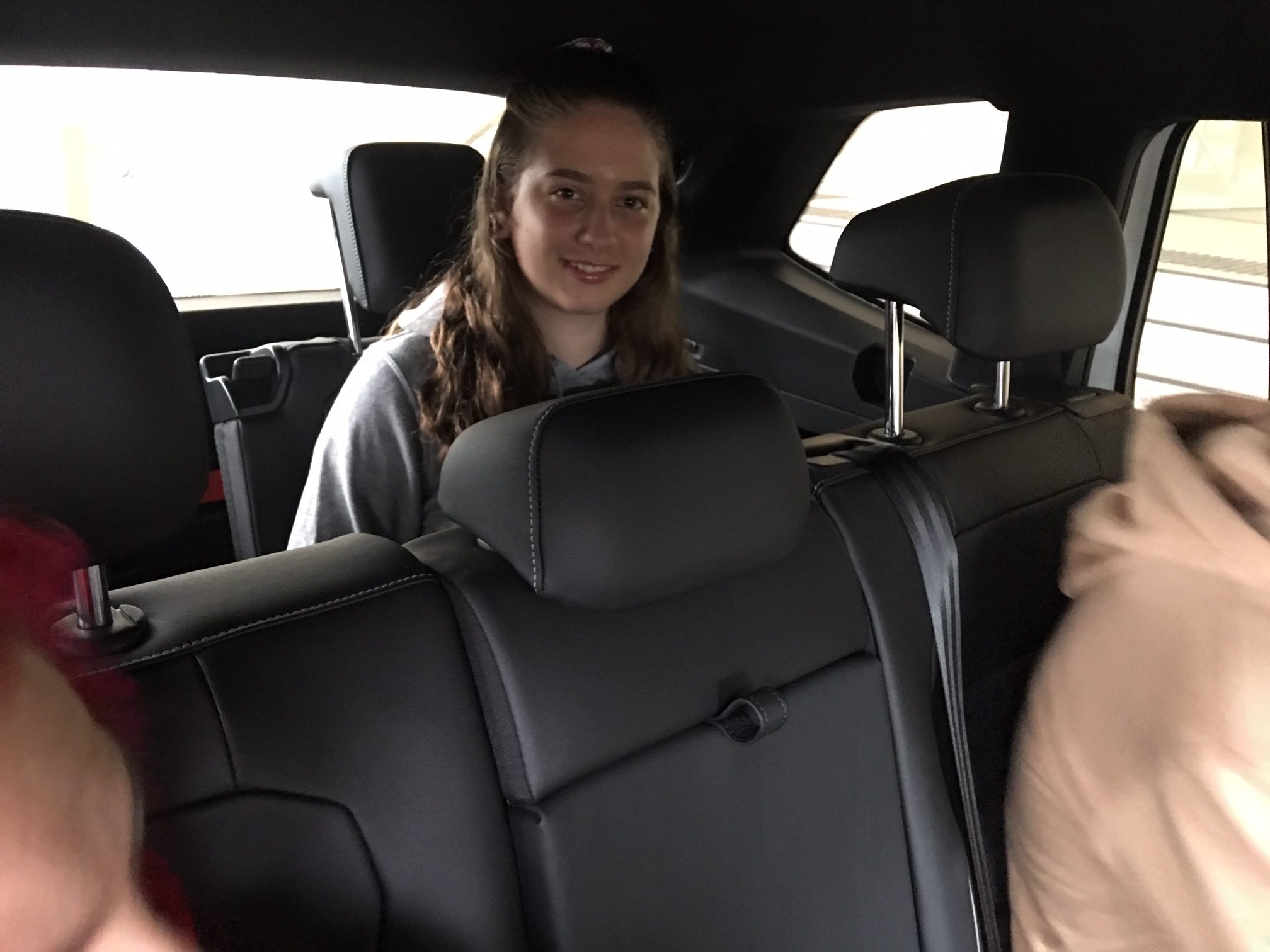
Headroom is a compromise for taller passengers, too, as evidenced by the pics.
But it’s worth putting the trip into context – we’d picked up an unexpected extra passenger for a five-minute drive to a nearby cafe, and for that length of journey, the extra seat came in very handy.
VW calls the Allspace a ‘5+2’ seater, rather than a seven-seat SUV, and we’d agree. If you need to occasionally tote members of the Under 7 netball squad to an away game, the Tiguan will work perfectly, but it’s not a full-time seating solution for taller goal-attack types.
UPDATE 1
The afternoon is stiflingly sultry, and the storm clouds gathered. It was the week before Christmas, and Mother Nature was getting real ornery…
For our next long term tester, we’ve picked a Volkswagen Tiguan Allspace, pictured here in all its Pure White 162TSI Highline glory.
You already know what a Tiguan is – VW’s mid-sized SUV competitor that goes up against category heavyweights like the Mazda CX-5, and against older but still strong-selling rivals like the Kia Sportage and Mitsubishi Outlander.
But it’s not technically a Tiguan; it’s a Tiguan Allspace. The two cars are built with most of the same bits, sure, but park them side-by-side, and the extra length of the seven-seat Allspace – neatly hidden by its well-balanced design – becomes apparent.
It’s also blockier and edgier than the softer, more rounded five-seat Tiguan.
Our Tiguan – henceforth known as Allan the Allspace – is a top-spec beastie, and costs $58,890 before on-roads. Allan also features a $2900 R-Line kit which gets us stuff like powered memory leather front seats, a sporty front bumper and rear spoiler, 20-inch rims, progressive steering, flappy gear paddles and lots of black interior bits.
It also gets a Sound and Vision package, which gets us a digital dash, auto parking, a 360-degree camera and a nicer stereo.
It runs a 2.0-litre turbocharged four-cylinder petrol engine which drives all four wheels through a seven-speed DSG. I might have said “140kW” in my video (hey! It was hailing!) but it actually makes 162kW and a healthy 350Nm of torque.
VW prefers to call the Allspace a ‘five plus two-seat’ configuration; the two jump seats in the back are really meant for small humans only. It still has room for 700 litres of stuff with the seats up and – interestingly for us – a not-unreasonable 2500kg braked trailer towing maximum.
Stay tuned for frequent small updates on Allan and how it adapts to life in the Robbo household. What will that entail? Towing race cars, lugging bicycles, long commutes and more!



